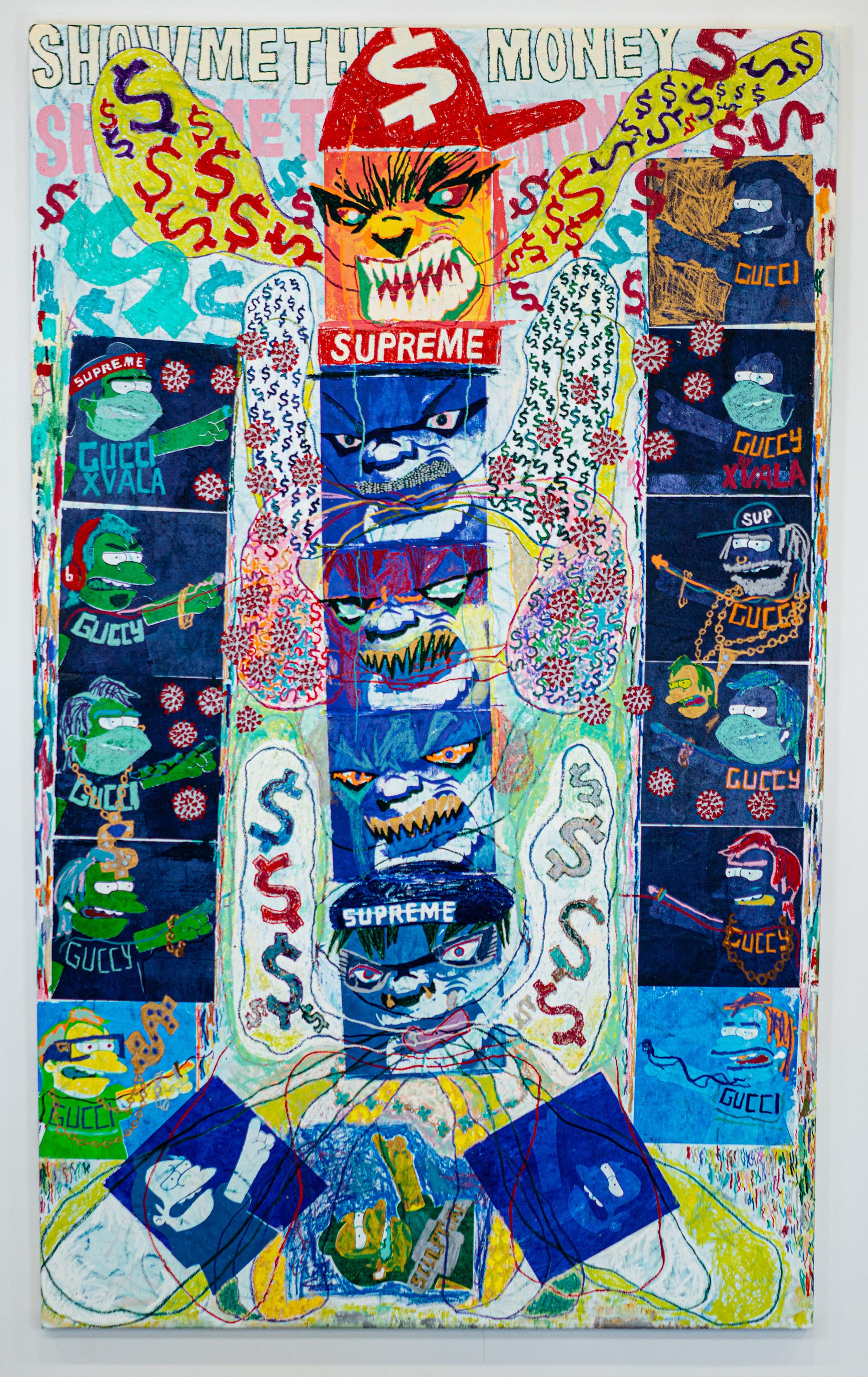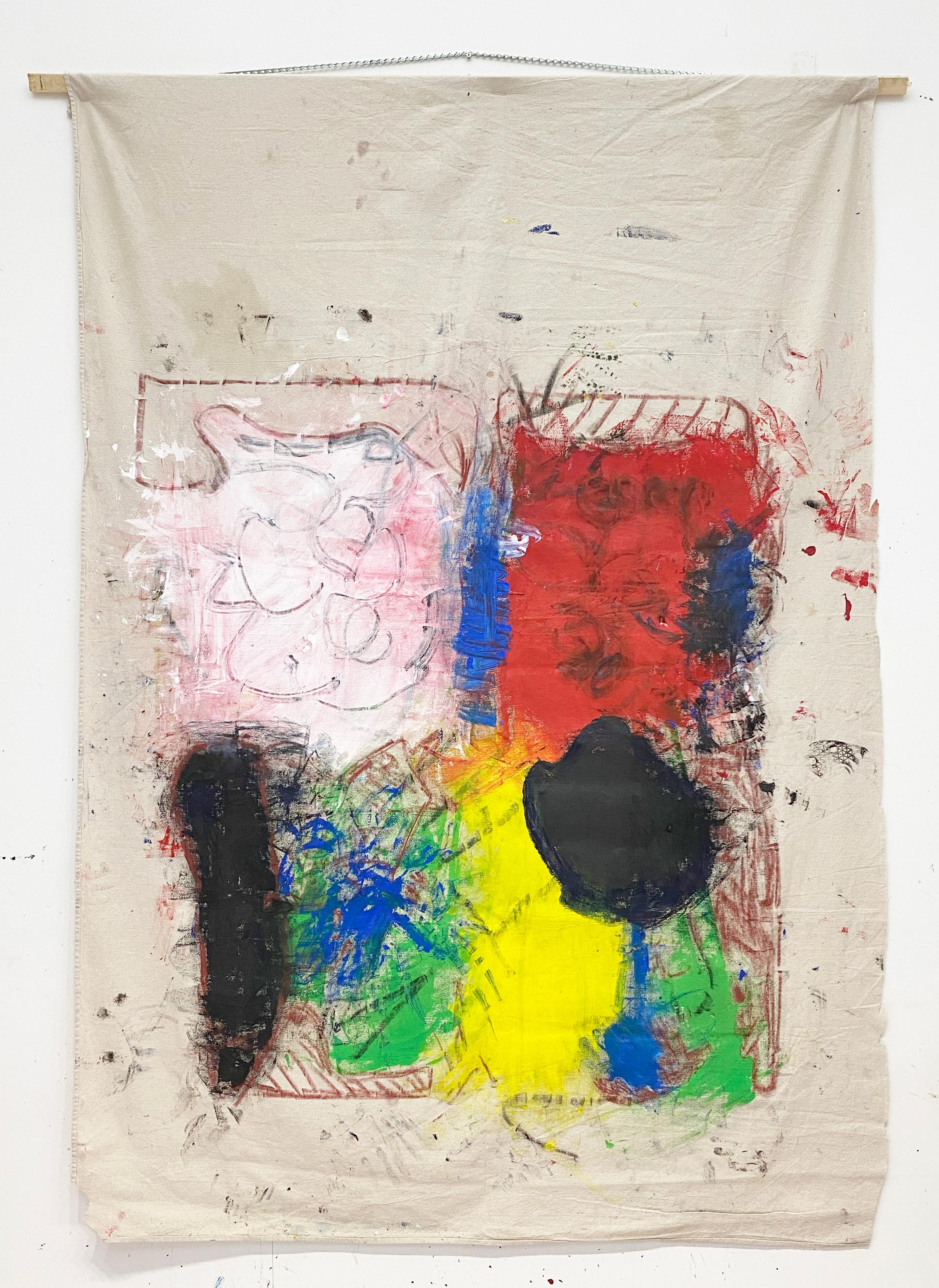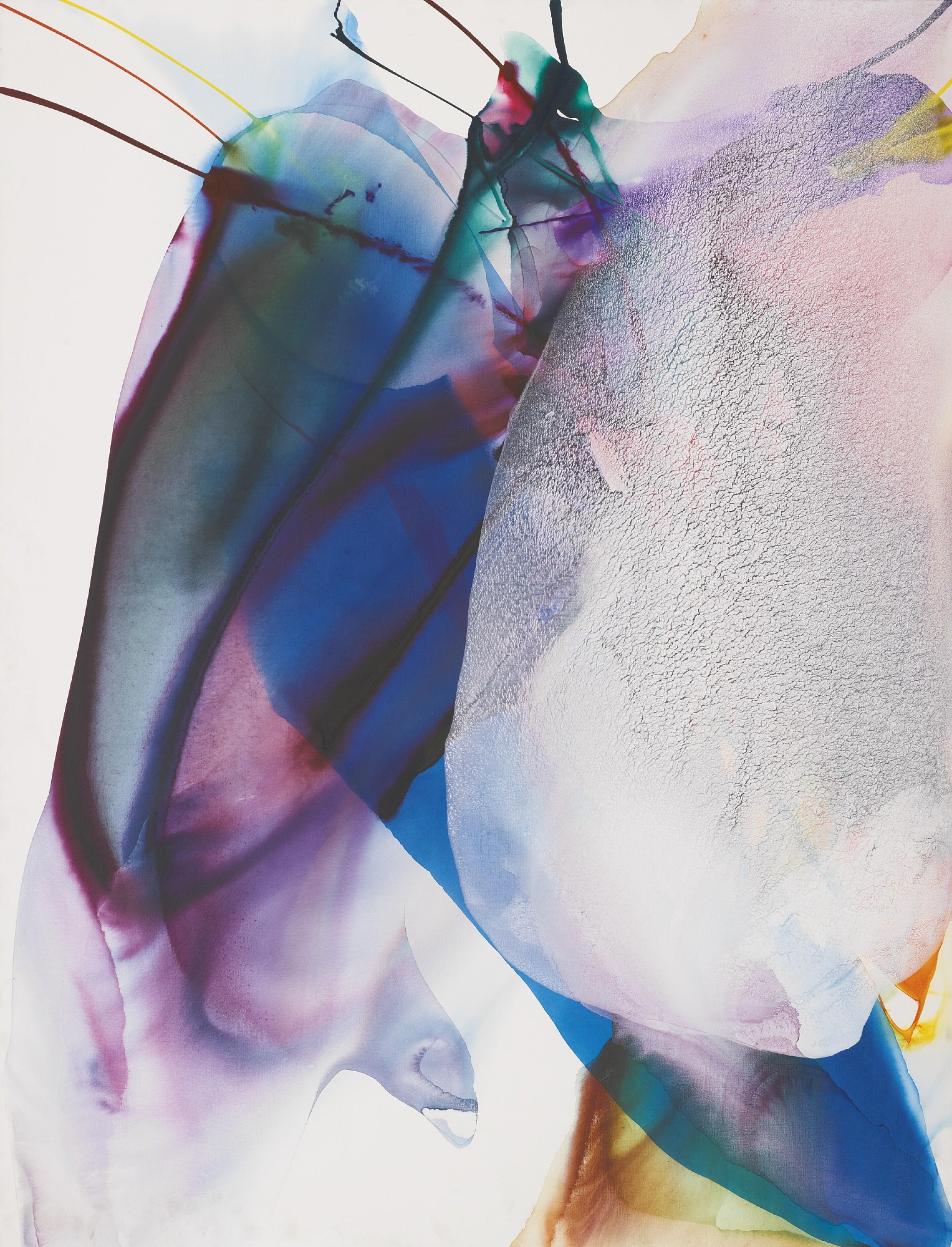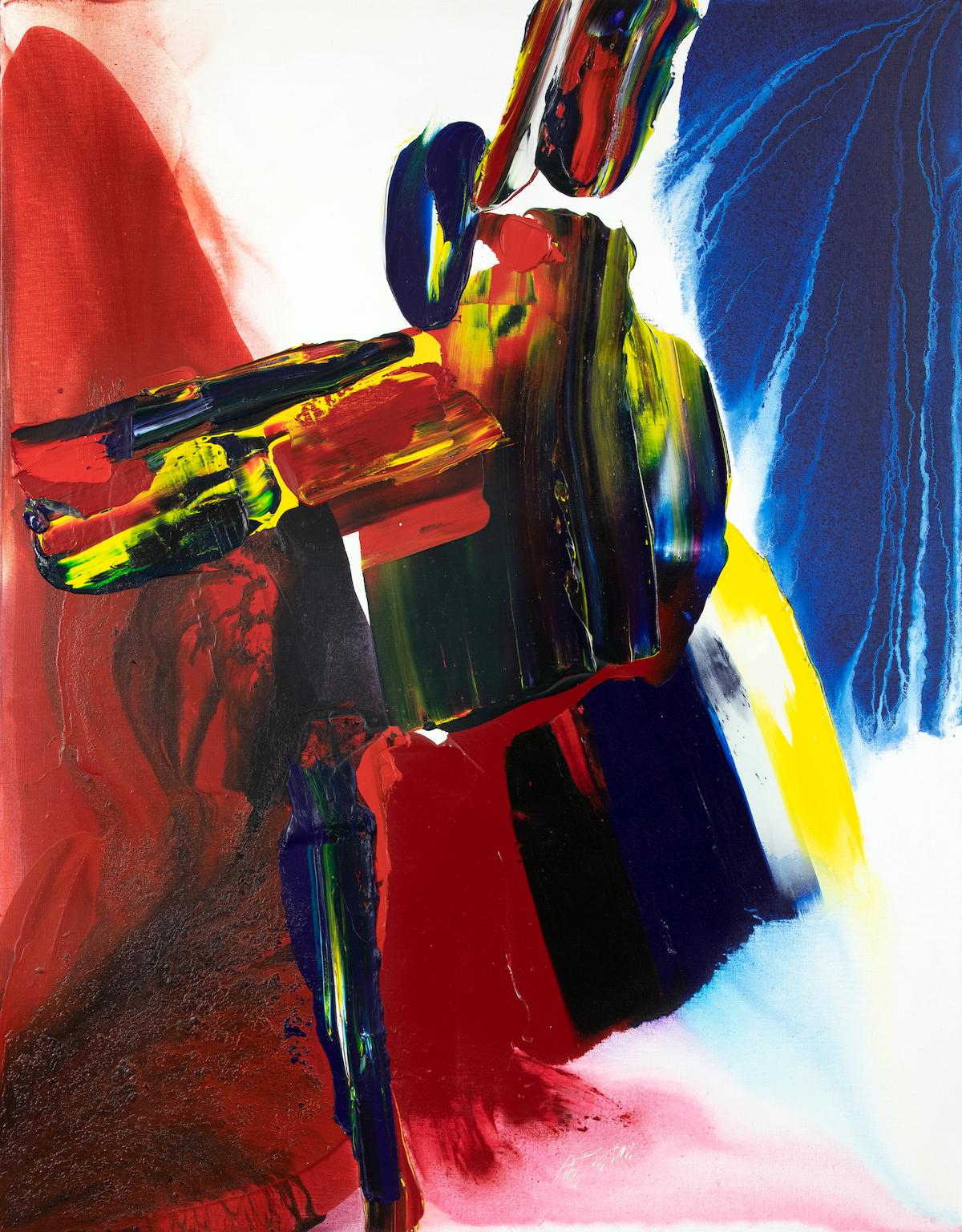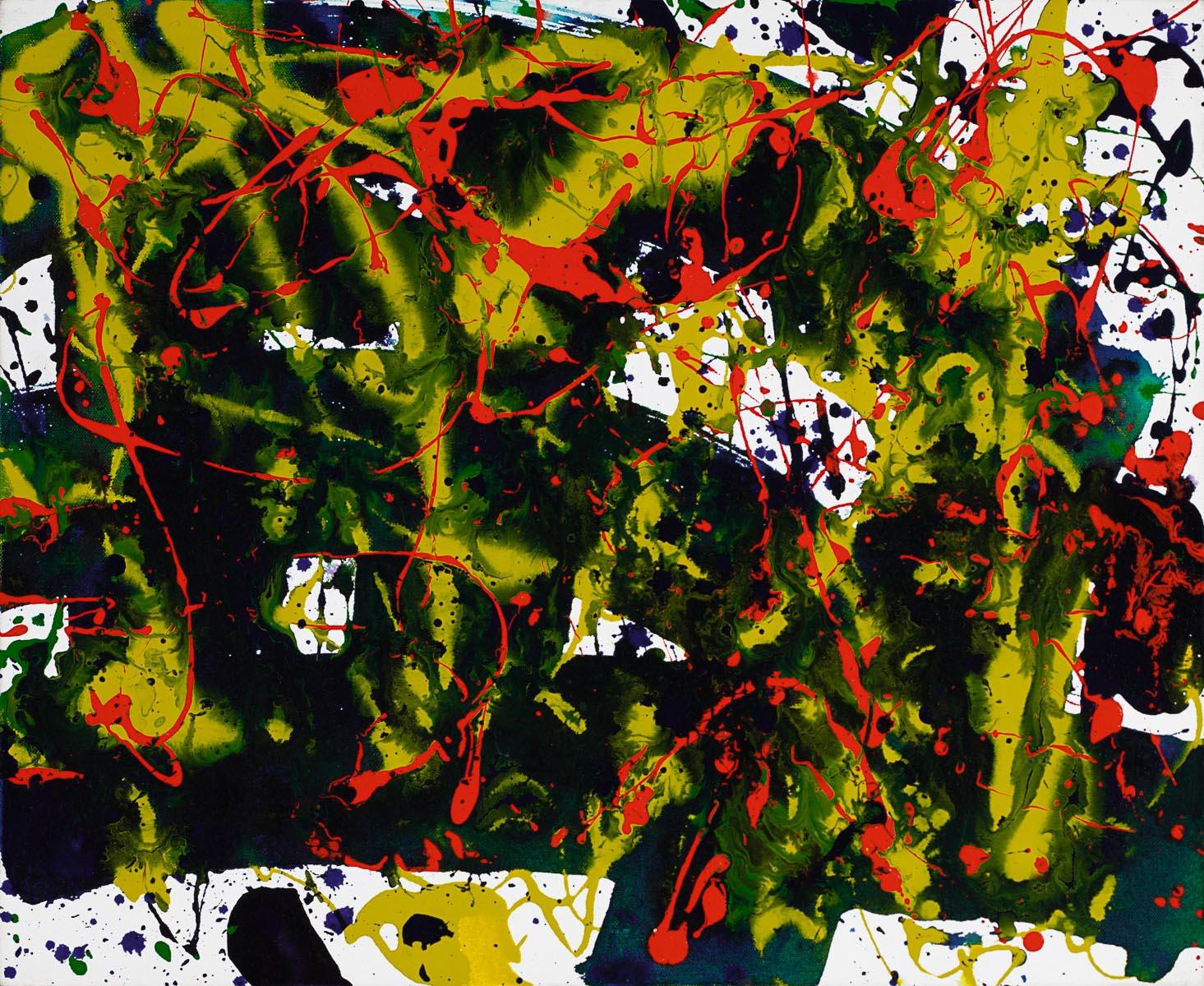Larry Zox"Lexington, " Larry Zox, Abstract Expressionism, Minimalism, Brown Modernism1973
1973
About the Item
- Creator:Larry Zox (1936-2006, American)
- Creation Year:1973
- Dimensions:Height: 62 in (157.48 cm)Width: 50 in (127 cm)
- Medium:
- Movement & Style:
- Period:
- Condition:
- Gallery Location:New York, NY
- Reference Number:1stDibs: LU1841210452772
Larry Zox
Larry Zox was one of the principal representatives of the generation of young painters following the era of the Abstract Expressionists. He is best known for his exuberant geometric abstractions. Many classified him as an Abstract artist, but he considered himself to be a Colorist, which made a strong contribution to the Color Field movement of the 1960s. Zox utilized geometric forms in a mechanistic format and fewer contrasting colors in a design that is based upon improvisation. His works conform to the modern idea that art must be done with fluidity, acceleration and rapidity of execution.
- ShippingRetrieving quote...Ships From: New York, NY
- Return PolicyA return for this item may be initiated within 3 days of delivery.
- "Untitled" Sherron Francis, Female Abstract Expressionism, Red Green Color FieldBy Sherron FrancisLocated in New York, NYSherron Francis Untitled, circa 1975 Acrylic on canvas 90 x 64 inches Artists such as Helen Frankenthaler, Morris Louis, Dan Christensen, and Sam Francis are already well-known name...Category
1970s Abstract Expressionist Abstract Paintings
MaterialsCanvas, Acrylic
- "Untitled" Sherron Francis, Female Abstract Expressionism, Blue Red Color FieldBy Sherron FrancisLocated in New York, NYSherron Francis Untitled, 1975 Acrylic on canvas 96 x 66 inches Artists such as Helen Frankenthaler, Morris Louis, Dan Christensen, and Sam Francis are already well-known names. How...Category
1970s Abstract Expressionist Abstract Paintings
MaterialsCanvas, Acrylic
- "Sonic Lark" Sherron Francis, Female Abstract Expressionism, Long Color FieldBy Sherron FrancisLocated in New York, NYSherron Francis Sonic Lark, 1974 Signed, titled and dated on the reverse Acrylic on canvas 24 x 109 1/2 inches Artists such as Helen Frankenthaler, Morris Louis, Dan Christensen, an...Category
1970s Abstract Expressionist Abstract Paintings
MaterialsCanvas, Acrylic
- "Noble O" Sherron Francis, Female Abstract Expressionism, Black Color FieldBy Sherron FrancisLocated in New York, NYSherron Francis Noble O, 1976 Signed, titled and dated on the reverse Acrylic and mixed media on canvas 57 x 21 inches Artists such as Helen Frankenthaler, Morris Louis, Dan Christe...Category
1970s Abstract Expressionist Abstract Paintings
MaterialsCanvas, Acrylic
- "Untitled" Calvert Coggeshall, Abstract Expressionism Hard-edge StripesLocated in New York, NYCalvert Coggeshall Untitled, circa 1975 Oil on canvas 50 x 40 inches Calvert Coggeshall worked as an abstract painter and interior designer primari...Category
1970s Abstract Expressionist Abstract Paintings
MaterialsCanvas, Acrylic
- "Untitled" Sherron Francis, Female Abstract Expressionism, Black Color FieldBy Sherron FrancisLocated in New York, NYSherron Francis Untitled, 1977 Signed and dated on the reverse Acrylic and mixed media on canvas 93 x 42 inches Artists such as Helen Frankenthaler, Morris Louis, Dan Christensen, a...Category
1970s Abstract Expressionist Abstract Paintings
MaterialsAcrylic, Canvas
- 'Show Me the Money: Ultra Luxury Edition, ' by XVALA, Mixed Media PaintingBy XVALALocated in Oklahoma City, OKThis large 119" x 72" mixed media painting by the artist, XVALA, is from his series 'Pandemic Collection: 8' and depicts bright colorful cartoon chara...Category
2010s Abstract Expressionist Figurative Paintings
MaterialsCanvas, Mixed Media, Acrylic, Oil Crayon, Screen
- JP TP : abstract expressionist work of artLocated in New York, NYAbstract expressionist work of art by Joseph Hicks. Joseph Hicks’s works are bright and colorful, full of life and creativity. His canvases are full of energy and dynamism due to t...Category
2010s Abstract Expressionist Abstract Paintings
MaterialsCanvas, Oil Crayon, Mixed Media, Acrylic
- 'Shattered Atlas: The Modern Burden' - Abstract Cubism Portrait by MasriBy Masri HayssamLocated in Carmel, CAIn "Shattered Atlas: The Modern Burden," the artist Masri presents a 40" x 30" mixed media canvas that epitomizes 'Shattered Cubism,' a style that fragments reality into geometric fo...Category
Early 2000s Abstract Expressionist Portrait Paintings
MaterialsCanvas, Mixed Media, Oil, Acrylic
- Phenomena West Mantle (1968). Acrylic on canvas painting by Paul JenkinsBy Paul JenkinsLocated in Hong Kong, HKAn emblematic example of Paul Jenkins mastery. It is not by hazard that Phenomena West Mantle was chosen as the cover of the catalogue for the groundbreaking exhibition "Paul Jenkins...Category
1960s Abstract Expressionist Abstract Paintings
MaterialsAcrylic, Canvas
- Phenomena Greet by Day by Paul Jenkins - Abstract Expressionist paintingBy Paul JenkinsLocated in London, GBPhenomena Greet by Day by Paul Jenkins (1923-2012) Acrylic on canvas 146 x 114.3 cm (57 ½ x 45 inches) Signed lower right, Paul Jenkins Executed in 1994-1996 Provenance: Private collection, New York (acquired directly from the artist) Stern Pissarro Gallery, London Private collection, Netherlands Artist biography Born at Kansas City in Missouri (USA), the multi-media artist, poet and playwright Paul Jenkins studied at the Kansas City Art Institute and the Art Students League in New York City. After his discharge from military service at the end of February 1946, he briefly studied playwriting with dramatist George McCalmon at the Carnegie Institute of Technology in Pittsburgh. Thereafter, Jenkins spent four years studying with Japanese American artist Yasuo Kuniyoshi in New York City. His first solo exhibitions were held at Studio Paul Facchetti in Paris in 1954 and the Martha Graham Gallery in New York City in 1956. Over the past thirty years, numerous retrospectives have been curated across the globe and Jenkins’ work can found in national collections from Europe and the United States to Israel, Australia and Japan. The diversity of his work springs from Jenkins’ wealth of eclectic influences. Some of his earliest works included what he called "interior landscapes" influenced by ancient natural forms like the caves he visited in the Ozark Mountains in his native-Missouri. Frequent student visits to the Frick Collection in New York fostered a love of the great masters: Bellini, Holbein, Vermeer, Rembrandt, de la Tour, Turner and Goya. In compliment, lingering student visits to the renowned Eastern collection of the Nelson-Atkins Museum of Art in Kansas City evoked powerful sympathy for a monumental Chinese fresco...Category
1990s Abstract Expressionist Abstract Paintings
MaterialsCanvas, Acrylic
- Untitled, 1994 (SFP94-36)By Sam FrancisLocated in Greenwich, CTUntitled, 1994 (SFP94-36) is an acrylic painting on canvas, from Francis' 'Last Works' collection. The canvas is 18 x 22 inches and stamped verso with the Sam Francis estate stamp. F...Category
20th Century Abstract Expressionist Paintings
MaterialsCanvas, Acrylic
